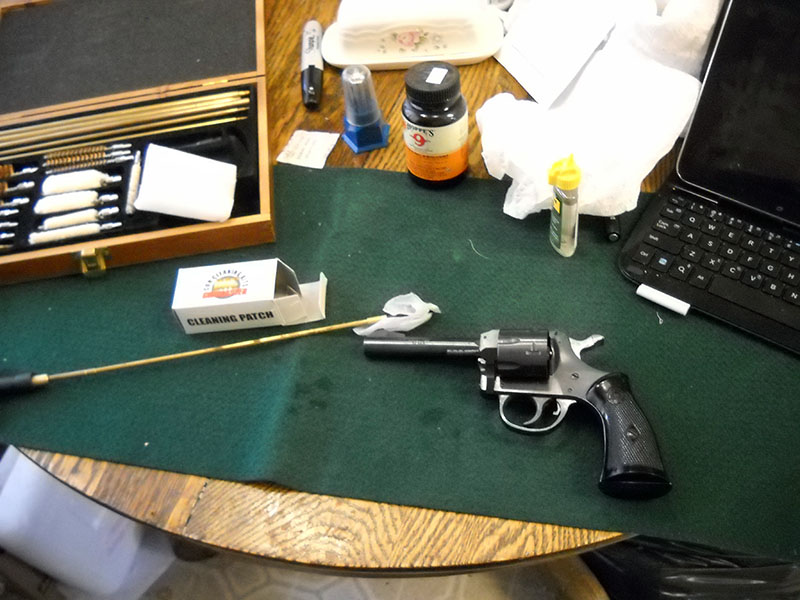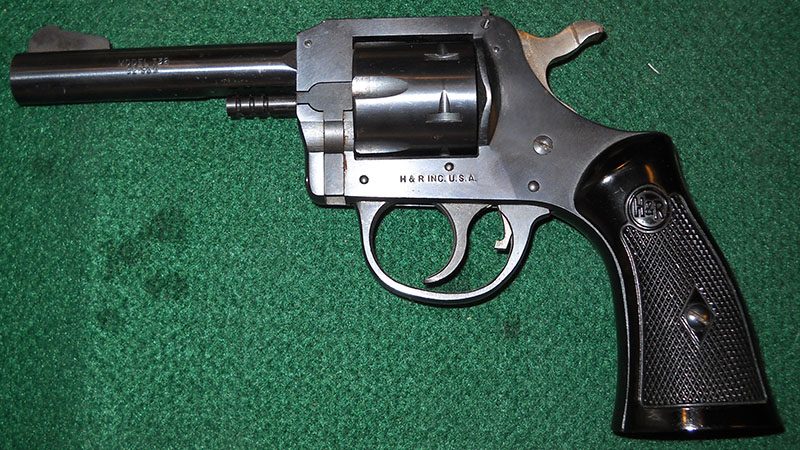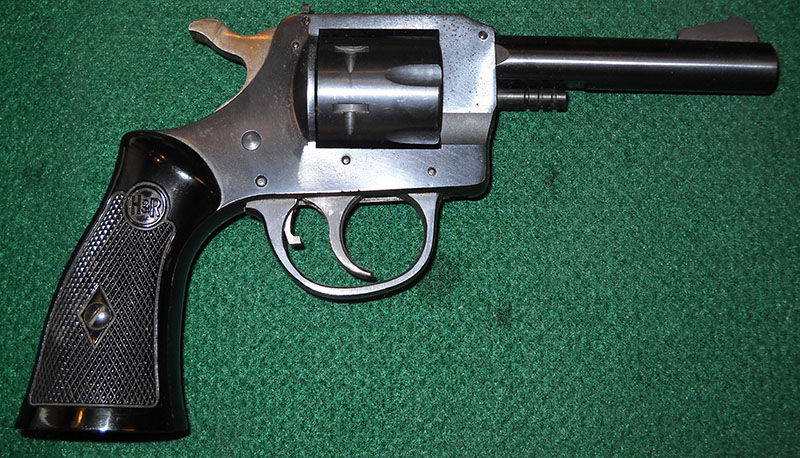

Originally posted April 8, 2017
My sainted mother asked me to clean a gun for her today, so I took the opportunity to get a couple of pictures.

We have here a Model 732 revolver, vintage 1966, made by the Worcester, Massachusetts-based firm of Harrington & Richardson. This was one of the many firearms factories that once (and not that long ago) flourished in southern New England; they were known for decent-but-not-outstanding build quality, solid if unimaginative design, and low cost. They were also one of the manufacturers that made guns to be sold under resellers' own names; the big department stores (Sears, Roebuck & Co., Montgomery Ward, et al.) used to sell rebadged H&Rs (among others) in their catalogs.
The Model 732 is a thoroughly conventional double-action revolver, with a six-shot cylinder chambered for the .32 S&W cartridge.

The cylinder rotates clockwise (from the shooter's perspective), like contemporary Colts (trivia: Smith & Wessons turn the other way), and swings out on a crane like any other side-loading DA revolver. One interesting feature is that there isn't a separate release for the cylinder, as you find on Colt and S&W revolvers; instead, the cylinder axis pin is the latch. You just pull it forward and swing the cylinder out. Pushing the same pin back actuates the ejector, just like in any other swing-out revolver I can think of.
Note that all of this revolver's markings are on the left side (apart from the serial number, which is on the bottom of the grip frame), and they are quite minimal. Model number, cartridge, manufacturer's name and country. It doesn't even specify the city, because in 1966 they didn't have to. (Didn't technically need to have serial numbers, in fact, but most reputable manufacturers did them anyway.) Over on the right side, there's nothing at all, apart from the H&R cartouche on the grip.

Other information:
.32 S&W was originally developed to hold a whopping (note: sarcasm) nine grains of black powder. It's another of those ancient cartridges, like .38 S&W and .44 Russian, that was the starting point for a whole series of progressively longer, more powerful rimmed cartridges having the same case head/rim geometry and bullet diameter: .32 S&W Long (also known as .32 Colt New Police, because Colt didn't want to put "S&W" on their stuff), .32 H&R Magnum, and .327 Federal Magnum. (None of which should be mistaken for .32 ACP, which is entirely unrelated.)
The original is an extremely stubby cartridge, no longer than the diameter of a U.S. quarter dollar, and was once held in high esteem as the most powerful of the "belly gun" cartridges—that is, cartridges intended to be used in guns that were only of use at extremely short ranges, such as, for example, the width of a card table.
(And yes, this is about as lofty a distinction as being the tallest Smurf. :)
Interestingly (to me, at least), the first of its longer offspring, .32 Long, is still popular among precision target shooters. I guess it has a particularly flat trajectory at the ranges used in that kind of shooting or something? Not sure.
H&R went out of business in 1986, although—naturally—there's another company using the name now. (In fact, I believe they go so far as to call themselves "H&R 1871", to trade on the original company's founding date. Sorry to keep banging on about this, but that kind of thing really winds me up for some reason.)
--G.